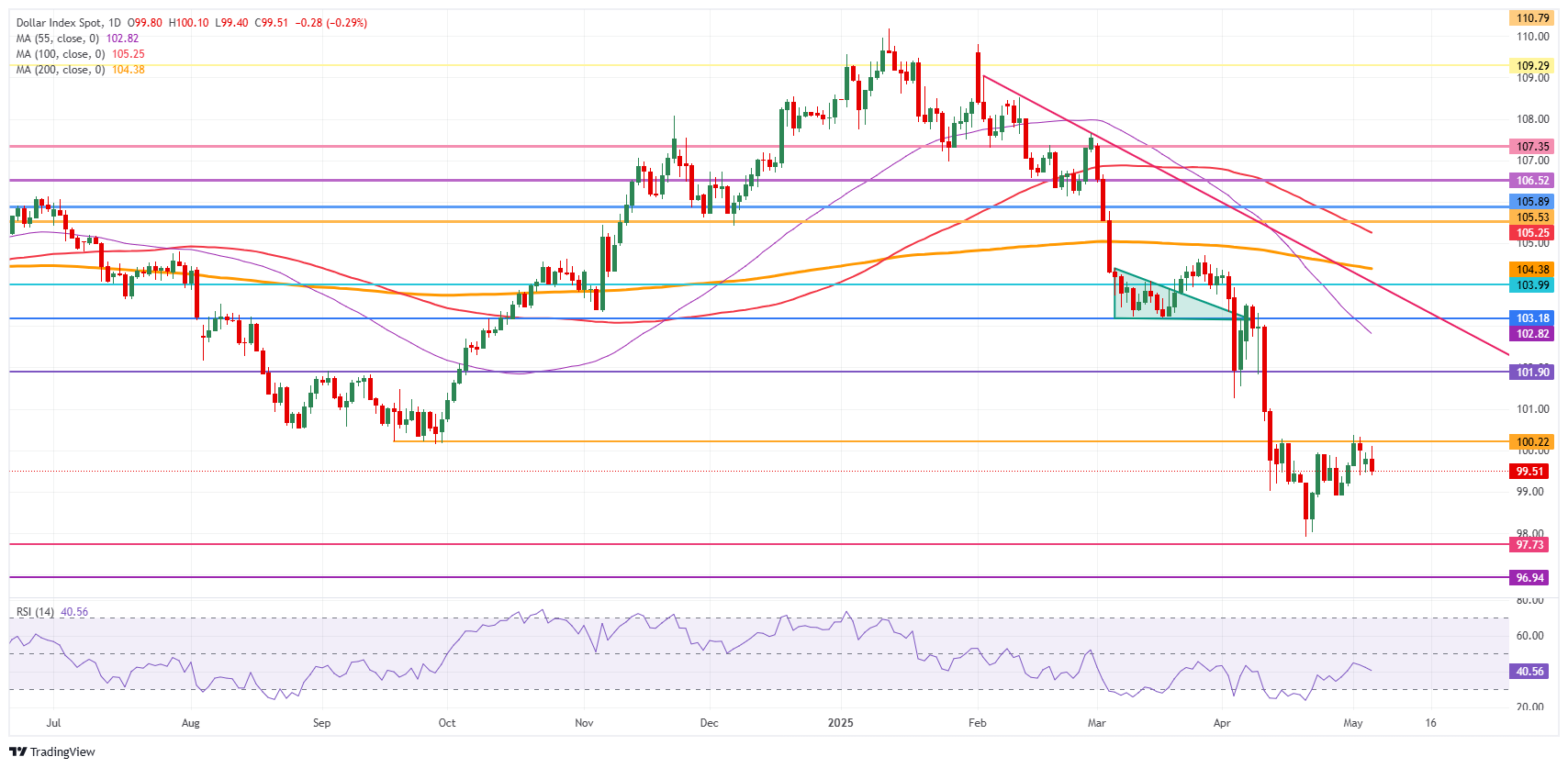The US Dollar Index (DXY), which tracks the Greenback's performance against six major currencies, is slipping lower on Tuesday as market anxiety rises. Traders are closely monitoring the recent surge in the Taiwan Dollar (TWD), which gained over 5% against the US Dollar on Monday before easing slightly on Tuesday. Market participants are evaluating whether this movement could spill over to larger Asian currencies like the South Korean Won (KRW), Japanese Yen (JPY), or Chinese Renminbi (CNH).
Geopolitical headlines are also adding to market volatility. In Germany, Friedrich Merz secured a majority in the German parliament after initially falling short, paving the way for him to become the new Chancellor. On the other side of the Atlantic, US Commerce Secretary Howard Lutnick raised the stakes for the Trump administration, emphasizing the need for a trade deal with a “top ten” economy. Meanwhile, the Russia-Ukraine conflict intensifies with escalating drone attacks, and Israel is preparing for a ground offensive to gain full control of the Gaza Strip.
Daily Digest: Market Movers - Political Drama and Economic Shifts
- This Tuesday, chaos unfolded in the German Bundestag as a formal vote was scheduled to swear in Friedrich Merz as the new Chancellor. However, Merz initially failed to secure enough votes, raising concerns about the stability of his coalition even before he officially took office. This unprecedented political deadlock now raises questions about the potential for a second vote, the appointment of a new Chancellor, or even the possibility of snap elections.
- In a dramatic turn after the US Opening Bell, Merz secured enough votes in a second round to become the new Chancellor of Germany.
- Across the Atlantic, Canadian Prime Minister Mark Carney is heading to the White House for a high-stakes meeting with US President Donald Trump to discuss a potential trade deal.
- On the economic front, the US Goods and Services Trade Balance for March widened to a deficit of $140.5 billion, exceeding the expected $129 billion and marking an increase from February's deficit of $122.7 billion.
- Equity markets took a hit in response to the political turmoil in Germany. The German DAX slipped by 0.5%, and US futures followed suit, with the Nasdaq leading the declines, down by 1%.
- The CME FedWatch tool indicates a slim 3.2% chance of an interest rate cut by the Federal Reserve at its May meeting, with a 96.8% probability of no change. The odds for a rate cut in June are higher at 31.8%, though the outlook remains uncertain.
- US 10-year Treasury yields are trading around 4.36%, reflecting a reversal from previous weeks' softening, as traders now price out the likelihood of a June rate cut, with even July’s rate cut prospects appearing increasingly doubtful.
US Dollar Index Technical Analysis: Testing the Waters
The US Dollar Index (DXY) faces some challenges as US Commerce Secretary Lutnick intensifies pressure within the Trump administration for an initial trade deal. Lutnick emphasized that the first deal should involve a top ten economy to set a strong precedent. Despite repeated claims from US President Donald Trump and his cabinet about imminent trade agreements, no signed deals have yet been announced.
To the upside, the DXY's first resistance level stands at 100.22, which previously supported the index in September 2024. A break above the 100.00 mark would signal a bullish shift. A firm recovery could lead to a return to 101.90, a key level that acted as a significant point of support in December 2023 and formed the base of an inverted head-and-shoulders pattern during the summer of 2024.
On the downside, support at 97.73 may be tested if bearish news emerges, with further support at 96.94. Beyond that, the index could test lower levels, including 95.25 and 94.56, marking fresh lows not seen since 2022
![]()






